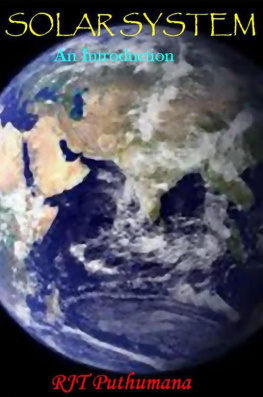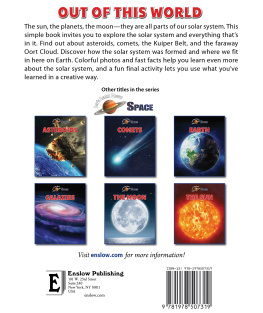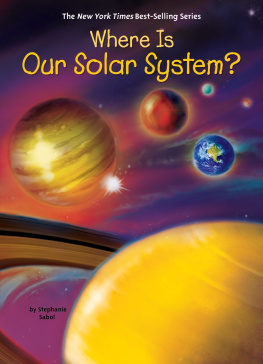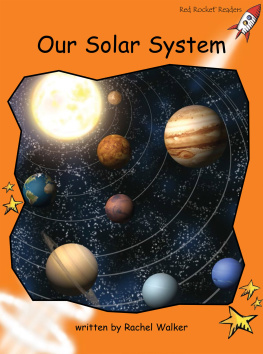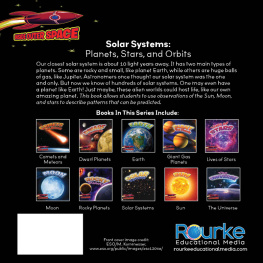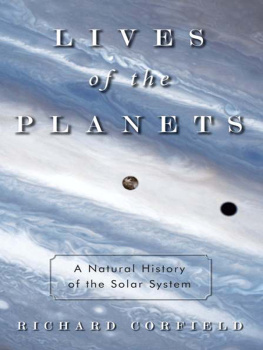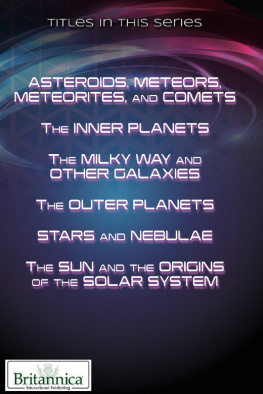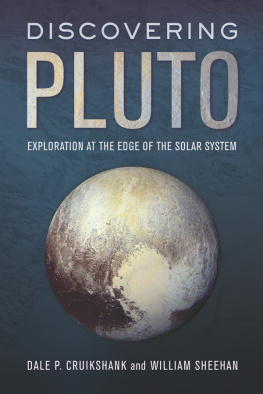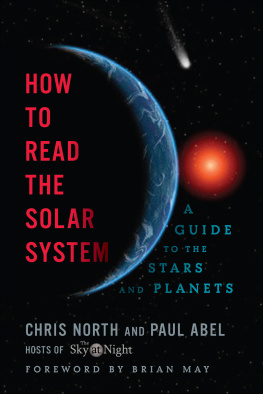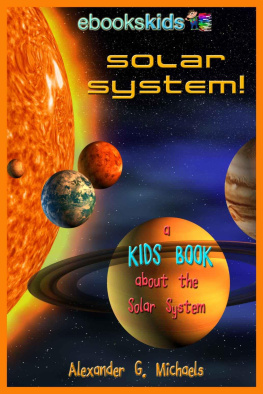The solar system started out as a huge star that collapsed around five billion years ago. The explosion sent shock waves through space, creating a swirling cloud of gas and stardust. The cloud was mostly composed of helium and hydrogen. The cloud spun faster and faster, eventually forming glowing red bulges at the center of newly formed disks. One bulge heated up so much, that nuclear reactions took place, forming the sun. Meanwhile, not that far from the bulge, pieces of dust and rock, and also ice collided, forming small rocky objects known today as planetesimals. These rocky planetesimals grew into the four terrestrial or rocky planets, such as Venus. These planets were close to the sun. Farther away, planets like Saturn and Jupiter collected ice and gases to become gas giants. Beyond these gas giants, dwarf planets such as Pluto, and Eris, formed out of ice and rock. The moon is thought to have been formed when a Mars-sized planetesimal collided with a young Earth, ejecting debris that later condensed. Currently, millions of asteroids, billions of comets, almost two hundred moons, eight planets, and five dwarf planets are in the solar system.
Fast facts:
Diameter-1,392,000 kilometers or, 109x the diameter of earth. (12,756 km.)
Size compared to earth-1,300,000x the size of earth
Distance from earth- 149.6 million kilometers.
Time taken to rotate once-25.6 days at the equator, and 33.5 days at the poles
Composition- three quarters are made of hydrogen and the rest is mostly helium and other gases.
The sun is the closest star to earth at 1 AU. The true color of this star is white, but is misleadingly considered a yellow dwarf star, because it appears to be yellow, as the atmosphere scatters the light rays emitted from the sun, upon reaching the earth. The temperature of the suns core is 15.7 million Kelvin, and 5,778 Kelvin at its surface. The sun is a population 1 star. It orbits in a clockwise motion, within the inner rim of the Orion arm around the Milky Way galactic center, completing its orbit every 225-250 million years. The sun is about 24,000-26,000 light-years from the galactic center of the Milky Way. In its core, the star fuses 620 MILLION metric tons of hydrogen per second.
The sun has a mass that is 333,000 times that of Earth, and 750 times that of all the planets together. Every second, the sun produces enough energy to meet the worlds energy needs for over 1,000 years. The core of the sun is approximately 27 million degrees and has a pressure that is billions of times that found on the Earth. The radiative zone surrounds the core, and is very dense. The convective zone wraps the radiative zone, and contains swirls of plasma. The photosphere is the surface of the sun, which we can see. Cooler spots, called sunspots dot the surface. Prominences, or clouds of plasma, also loop out of the Suns surface occasionally. An extremely hot atmosphere called the corona surrounds the sun. The sun makes life on Earth possible. It provides energy for life to flourish. The sun is currently 4.6 billion years old. After the sun runs out of hydrogen, it will grow hotter and expand into a red giant. This will swallow several inner planets. Finally, it will become a dense white dwarf after fusing heavier elements.
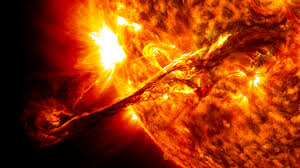
Fast facts:
Diameter -3,030 miles
Time taken to rotate once- 59 earth days
Time taken to orbit around the sun- 88 earth days
Distance from the sun- 36 million miles
Moons- none
Gravity- (earth=1) 0.38
Composition- mercury has a large iron core and rocky mantle and crust
Tilt- 0.1 degrees
Mercury is the smallest planet in our solar system. Mercury has no atmosphere, but only small amounts of some gases, such as helium. Because it has no atmosphere, the side facing the sun can get extremely hot at 800 degrees, and the side facing away from the sun can get bitter cold, at -290 degrees. Even though it is the closest planet to the sun, it is NOT the hottest planet in the solar system. In Roman mythology, Mercury is the son of Zeus/ Jupiter- who is the king of all gods in Roman mythology- and is the speedy messenger of the gods. Mercury is covered by millions of craters. One of the most well- known craters is Caloris basin, a huge crater that is 800 miles across, and rimmed by mountains. The Caloris basin lies near the equator, which is the hottest place on the planet- Caloris means heat in Latin. The impact that created the basin was so powerful that it send shock waves around the other side of the planet and produced large hills. The planet has a large iron core, surrounded by a rocky, silicate mantle and wrapped in a crust of silicate rock.
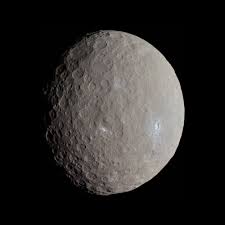
Fast facts:
Diameter- 7,520 miles
Time taken to rotate once on its axis- 243 earth days
Time taken to orbit once around the sun- 224.7 earth days
Distance from the sun-67 million miles
Moons-none
Gravity-(earth=1) 0.91
Composition- Venus has a core made of molten/solid iron and nickel, a rocky mantle, and silicate crust.
Tilt- 177 degrees
Venus is the hottest and brightest planet in the solar system, due to its clouds. Venus is cloaked in a thick layer of clouds, which contains 96% carbon dioxide. The carbon dioxide traps the heat, making the surface hotter than Mercury at 860 degrees! One unusual fact about this planet is that it rotates clockwise, unlike the other planets, which rotate counter clockwise. Because of its thick clouds, spacecraft use radar to see the surface of the planet. Venuss day is also longer than its year! The planet takes 225 earth days to orbit once around the sun, but rotates so slowly, that 243 earth days = one day on Venus. Venus is named after the Roman goddess of love, and beauty. Venus is the planet that is most similar to Earth in size, mass and composition. It is also the closest planet to Earth. The thick clouds of sulfuric acid would roast, crush, suffocate, and burn any astronauts on the planet. The twenty percent of sunlight that pierces the clouds and makes it to the surface is trapped there, turning Venus into an oven. The clouds can move up to 220 miles per hour around the planet. There are over 1,600 volcanoes on Venus, and Maat Mons is the tallest at 3 miles high. Spacecraft sent to the planet use radar to map the surface. The first successful landing on Venus occurred in 1970.

